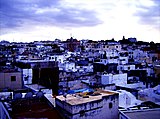Related Research Articles
International broadcasting, in a limited extent, began during World War I, when German and British stations broadcast press communiqués using Morse code. With the severing of Germany's undersea cables, the wireless telegraph station in Nauen was the country's sole means of long-distance communication.
Maghrebi Arabic is a vernacular Arabic dialect continuum spoken in the Maghreb—western Islamic Africa and, in the past, Islamic Iberia and Sicily. It includes Moroccan, Algerian, Tunisian, Libyan, Hassaniya, Maltese, and, previously, Andalusi and Siculo-Arabic. It is known locally as ad-Dārija. This serves to differentiate the spoken vernacular from Standard Arabic. Maghrebi Arabic has a predominantly Semitic and Arabic vocabulary, although it contains a few Berber loanwords which represent 2–3% of the vocabulary of Libyan Arabic, 8–9% of Algerian and Tunisian Arabic, and 10–15% of Moroccan Arabic. The Maltese language is believed to have its source in a language spoken in Muslim Sicily that ultimately originates from Tunisia, as it contains some typical Maghrebi Arabic areal characteristics.

The Republic of the Rif was a confederate republic in the Rif, Morocco, that existed between 1921 and 1926. It was created in September 1921, when a coalition of Rifians led by Abd el-Krim revolted in the Rif War against the Spanish protectorate in Morocco under the Alaouite dynasty. The French would intervene on the side of Spain in the later stages of the conflict. The Republic was the first independent nation-state Republic in the history of Africa. A protracted struggle for independence killed many Rifians and Spanish–French soldiers, and witnessed the use of chemical weapons by the Spanish army—their first widespread deployment since the end of the World War I. The eventual Spanish–French victory was owed to the technological and manpower advantages enjoyed by the colonizers, in spite of their lack of morale and coherence. Following the war's end, the Republic was ultimately dissolved in 1926.

Tmazight or Tarifit Berber, also known as Riffian is a Zenati Berber language spoken in the Rif region in northern Morocco. It is spoken natively by some 1,271,000 Rifians primarily in the Rif provinces of Al Hoceima, Nador and Driouch. Tarifit is strongly influenced by the Arabic language, and borrowed foreign loanwords represent 51.7% of the total Tarifit vocabulary.

The Rif or Riff, also called Rif Mountains, is a geographic region in northern Morocco. It is bordered on the north by the Mediterranean Sea and Spain and on the west by the Atlantic Ocean, and is the homeland to the indigenous people of the Rifians people. Historically, it belonged to the Rif Republic and its president, Abd el Krim, who led the Rif War from 1920 to 1927 and against a Spanish colonial empire, the Rif region was Historically a Spanish colony by the Spanish colonial empire in Africa. This mountainous and fertile area is bordered by Cape Spartel and Tangier to the west, by Berkane and the Moulouya River to the east, by the Mediterranean to the north, and by the Ouergha River to the south. The Rif mountains are separated into the eastern Rif mountains and western Rif mountains.
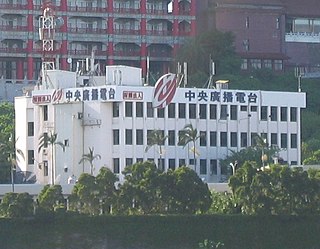
Mohamed Choukri was a Moroccan author and novelist who is best known for his internationally acclaimed autobiography For Bread Alone, which was described by the American playwright Tennessee Williams as "A true document of human desperation, shattering in its impact".
Medi1 Radio is a private, commercial Moroccan radio network. Medi 1 has an audience of around 23 million people. It is emitted from Nador transmitter on 171 kHz longwave, and via internet and satellite.
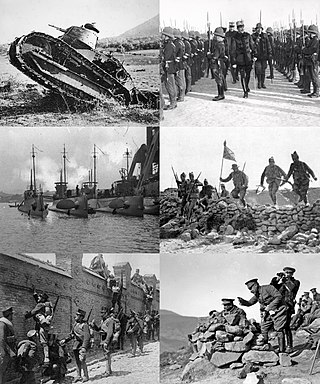
The Rif War was an armed conflict fought from 1921 to 1926 between the occupying colonialists of Spain and the Berber tribes of the mountainous Rif region of northern Morocco.
United Nations Radio was created on 13 February 1946. In 2017, United Nations Radio and the UN News Centre merged to form UN News, producing daily news and multimedia content in Arabic, Chinese, English, French, Swahili, Portuguese, Russian, Spanish, and Hindi. In its new iteration, UN News Audio continues to produce daily news and feature stories about the work of the UN and its member countries in eight languages for more than 2,000 partner radio stations around the world.
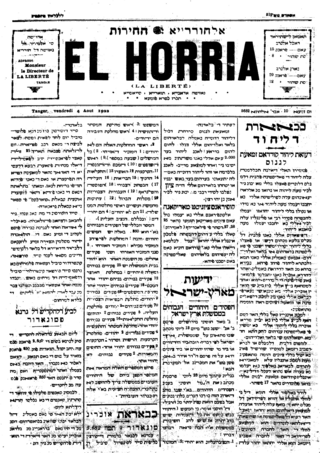
Judeo-Moroccan Arabic is the variety or the varieties of the Moroccan vernacular Arabic spoken by Jews living or formerly living in Morocco. Historically, the majority of Moroccan Jews spoke Moroccan vernacular Arabic, or Darija, as their first language, even in Amazigh areas, which was facilitated by their literacy in Hebrew script. The Darija spoken by Moroccan Jews, which they referred to as al-‘arabiya diyalna as opposed to ‘arabiya diyal l-məslimīn, typically had distinct features, such as š>s and ž>z "lisping," some lexical borrowings from Hebrew, and in some regions Hispanic features from the migration of Sephardi Jews following the Alhambra Decree. The Jewish dialects of Darija spoken in different parts of Morocco had more in common with the local Moroccan Arabic dialects than they did with each other.
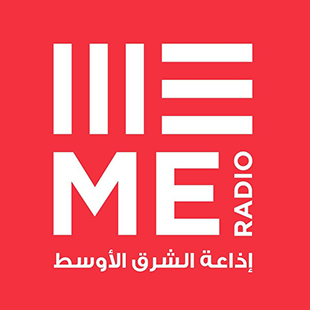
CHOU is a multilingual Canadian radio station broadcasting in Montreal, Quebec at 1450 kHz and retransmitted at 104.5 MHz. The main programming is in Arabic language and caters for various Arab and Middle Eastern communities in Greater Montreal and vicinity in Arabic including Lebanese, Syrian, Egyptian and Maghrebi dialects. CHOU also runs a two-hour weekly show in Armenian. It is also offered online and on various applications.

The Jebala are a tribal confederation inhabiting an area in north-west Morocco from the town of Ketema to the west. The Jbala region (from Moroccan Arabic jbāl thus occupies the western part of the Rif mountains. The Jbala has a population of 1,284,000 and is divided into over 40 tribes, today known as ‘rural communes’, and adjacent to them are a small group of nine tribes called Ghmara , who inhabit the territory between the line of mountain peaks to the north of Chefchaouen and the Mediterranean Sea. In addition to tribal heterogeneity, this region is also geographically diverse. High mountains are interspersed with hills and flatlands, and local inhabitants settle in both the high mountains and valleys. In addition to the rainy climate, which influences the way the inhabitants build their houses as well as their special agricultural practices, there are also numerous cultural characteristics that contribute to an emphasised sense of identity and make the Jbala people clearly distinguishable from their neighbours from the eastern part of the Rif Mountains where the climate is more arid, and from the former shepherds from the Atlantic coast. There are only a few cities in the country of the Jbala, and its population remains mostly rural. During the Middle Ages, chroniclers and historians knew the Jbala under their original name, Ghomara.

There are a number of languages in Morocco. De jure, the two official languages are Standard Arabic and Standard Moroccan Berber. Moroccan Arabic is by far the primary spoken vernacular and lingua franca, whereas Berber languages serve as vernaculars for significant portions of the country. The languages of prestige in Morocco are Arabic in its Classical and Modern Standard Forms and sometimes French, the latter of which serves as a second language for approximately 33% of Moroccans. According to a 2000–2002 survey done by Moha Ennaji, author of Multilingualism, Cultural Identity, and Education in Morocco, "there is a general agreement that Standard Arabic, Moroccan Arabic, and Berber are the national languages." Ennaji also concluded "This survey confirms the idea that multilingualism in Morocco is a vivid sociolinguistic phenomenon, which is favored by many people."
The varieties of Arabic, a Semitic language within the Afroasiatic family originating in the Arabian Peninsula, are the linguistic systems that Arabic speakers speak natively. There are considerable variations from region to region, with degrees of mutual intelligibility that are often related to geographical distance and some that are mutually unintelligible. Many aspects of the variability attested to in these modern variants can be found in the ancient Arabic dialects in the peninsula. Likewise, many of the features that characterize the various modern variants can be attributed to the original settler dialects as well as local native languages and dialects. Some organizations, such as SIL International, consider these approximately 30 different varieties to be separate languages, while others, such as the Library of Congress, consider them all to be dialects of Arabic.
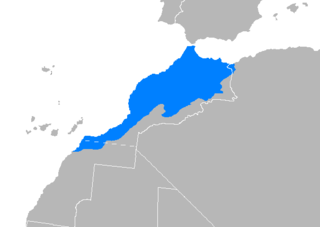
Moroccan Arabic, also known as Darija (الدارجة), is the dialectal, vernacular form or forms of Arabic spoken in Morocco. It is part of the Maghrebi Arabic dialect continuum and as such is mutually intelligible to some extent with Algerian Arabic and to a lesser extent with Tunisian Arabic. It is spoken by 90.9% of the population of Morocco. While Modern Standard Arabic is used to varying degrees in formal situations such as religious sermons, books, newspapers, government communications, news broadcasts and political talk shows, Moroccan Arabic is the predominant spoken language of the country and has a strong presence in Moroccan television entertainment, cinema and commercial advertising. Moroccan Arabic has many regional dialects and accents as well, with its mainstream dialect being the one used in Casablanca, Rabat, Tangier, Marrakesh and Fez, and therefore it dominates the media and eclipses most of the other regional accents.
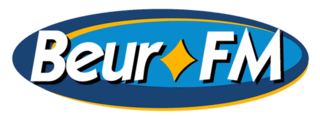
Beur FM is a French local radio station catering mainly to France's Maghrebi communities including: Algerians, Moroccans and Tunisians.

The Hirak Rif Movement or the Rif Movement is a popular resistance movement that organised mass protests in the Berber Rif region in northern Morocco between October 2016 and June 2017. The movement was triggered by the death of Mouhcine Fikri, a fishmonger who was crushed to death after jumping in the back of a garbage truck attempting to retrieve his allegedly illegal fish merchandise confiscated by local authorities.
The Fessi dialect is a dialect of Moroccan vernacular Arabic, or Darija, associated with the city of Fes, especially with the old elite families of the city.
References
- ↑ Lancement d'une station de radio privée - Jeune Afrique (in French)
